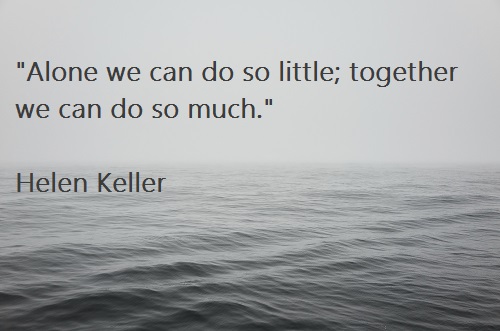New Year, New Leadership
Share with friends:
Starting a new year feels like starting with a blank page. We have 365 days (well, 366) to make a difference in our lives. And when it comes to being a leader, a new year means an opportunity to lead with new paradigms and leave the traditional ones in the past.
Why update your leadership model? Today the ability to evolve with changing markets is a sign of sustainability. Modern styles of leadership drive a company’s evolution by empowering the people within to lead and share on their own. An updated leadership model has two large benefits, among many others. Primarily, the most powerful way to reach clients and employees is to share information and inspire by telling stories. And secondly, 70% of American employees are disengaged from their work. Replacing a closed, traditional style of leadership with a more open and collaborative one welcomes an atmosphere of growth that will cultivate both stories and engagement.
Traditional Versus Dynamic
Companies who want to accommodate change and cultivate innovation with their people are doing so with a more dynamic style of leadership versus traditional. According to the American Productivity and Quality Center (APQC), traditional forms of leadership are closed hierarchical whereas dynamic leadership is a “flat, organizational structure designed around shared goals, collaborative work processes and situation/knowledge or idea-based authority. Engagement with employees and clients will yield insight at the street level.”
Stories are a perfect way to capture the evolution of an organization. But first there needs to be evolution. Leaders who want to see their organization grow will adopt an evolutionary leadership style, which is one that is inclusive, flexible, innovative, and open. Primary can attest to the impact of employing a narrative to record and share our growth.
A Modern Style of Leadership
One will see the effects of a dynamic leadership structure in three major areas of the organization: environment, relationships, and values. The following is what an organization under a new style of leadership will look like.
Environment: Because outside influences are more global than they were in the past, the small, contained impact of bureaucracy will be a thing of the past. New leadership styles will be driven by changes and developments in technology, and the work environment will be driven by innovation and shared goals. Structure would consist of cross-functional work teams. The overall vision is shared organization-wide, and is long-term and broad. The bottom line, while still important, is not the sole subject of focus.
Relationships: Leaders will see a significant change is the way people connect with each other. Relationships will be encouraged. Communities will replace hierarchies, and the flow of power being will be more universal and fluid. The people in the organization are empowered to make change within the organization, creating authentic authority as opposed to authority from the top down.
Values: Modern leaders will emphasize flexibility and growth within their organization. There will be a strong orientation to people and their universal potential. Such a practice is evident in Primary’s core belief that People Create Success. As with information sharing and inspiring, stories are a powerful way to illustrate the impact people have had on Primary and the impact they will have in the future.
The world is always changing and leaders must be ready to change with it. And that may be mean shedding traditional methods of leadership and moving forward with a style that emphasizes collaboration and a fluid sharing of ideas and authority. It could be that the simplest way to drive your organization towards the future is to empower all the people within the organization to make that push.


